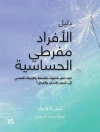‘This field guide is useful for trained ecologists, botanists, and naturalists, and is accessible to anyone else who wonders what is sprouting up from that sidewalk crack or in that corner of their suburban garden.’ â• Rhodora
In this field guide to the future, esteemed Harvard University botanist Peter Del Tredici unveils the plants that will become even more dominant in urban environments under projected future environmental conditions. These plants are the most important and most common plants in cities. Learning what they are and the role they play, he writes, will help us all make cities more livable and enjoyable.
With more than 1000 photos, readers can easily identify these powerful plants. Learn about the fascinating cultural history of each plant.
表中的内容
Introduction
Mosses and Ferns
Bryaceae (Silvertip Moss Family)
Dryopteridaceae (Woodfern Family)
Horsetails
Equisetaceae (Horsetail Family)
Conifers
Taxaceae (Yew Family)
Woody Dicots
Anacardiaceae (Cashew Family)
Berberidaceae (Barberry Family)
Betulaceae (Birch Family)
Bignoniaceae (Trumpet Creeper Family)
Cannabaceae (Hemp Family)
Caprifoliaceae (Honeysuckle Family)
Celastraceae (Stafftree Family)
Elaeagnaceae (Oleaster Family)
Fabaceae = Leguminosae (Pea Family)
Fagaceae (Beech Family)
Juglandaceae (Walnut Family)
Moraceae (Mulberry Family)
Oleaceae (Olive Family)
Paulowniaceae (Princess Tree Family)
Ranunculaceae (Buttercup Family)
Rhamnaceae (Buckthorn Family)
Rosaceae (Rose Family)
Rutaceae (Rue Family)
Salicaceae (Willow Family)
Sapindaceae (Soapwort Family)
Simaroubaceae (Quassia Family)
Solanaceae (Nightshade Family)
Ulmaceae (Elm Family)
Vitaceae (Grape Family)
Herbaceous Dicots xv
Amaranthaceae (Amaranth Family)
Apiaceae = Umbelliferae (Carrot Family)
Apocynaceae (Dogbane Family)
Asclepiadaceae (Milkweed Family)
Asteraceae = Compositae (Aster Family)
Balsaminaceae (Touch-me-not Family)
Brassicaceae = Cruciferae (Mustard Family)
Cannabaceae (Hemp Family)
Caryophyllaceae (Pink Family)
Convolvulaceae (Morning Glory Family)
Crassulaceae (Stonecrop Family)
Cucurbitaceae (Gourd Family)
Euphorbiaceae (Spurge Family)
Fabaceae = Leguminosae (Pea Family)
Hyperiaceae (St. John’s Wort Family)
Lamiaceae = Labiatae (Mint Family)
Lythraceae (Loosestrife Family)
Malvaceae (Mallow Family)
Molluginaceae (Carpetweed Family)
Onagraceae (Evening Primrose Family)
Oxalidaceae (Woodsorrel Family)
Papaveraceae (Poppy Family)
Phytolaccaceae (Pokeweed Family)
Plantaginaceae (Plantain Family)
Polygonaceae (Smartweed Family)
Portulacaceae (Purslane Family)
Ranunculaceae (Buttercup Family)
Rosaceae (Rose Family)
Rubiaceae (Madder Family)
Scrophulariaceae (Figwort Family)
Solanaceae (Nightshade Family)
Urticaceae (Nettle Family)
Verbenaceae (Verbena Family)
Violaceae (Violet Family)
Monocots xv
Amaryllidaceae (Amaryllis Family)
Commelinaceae (Spiderwort Family)
Cyperaceae (Sedge Family)
Iridaceae (Iris Family)
Juncaceae (Rush Family)
Poaceae = Gramineae (Grass Family)
Smilacaceae (Smilax Family)
Typhaceae (Cattail Family)
关于作者
Peter Del Tredici is a botanist specializing trees. He retired from the Arnold Arboretum of Harvard University in 2014 after thirty-five years as plant propagator, bonsai curator, editor of Arnoldia, and Director of Living Collections and Senior Research Scientist. In 2013, he was awarded the Veitch Gold Medal by The Royal Horticultural Society, ‘in recognition of services given in the advancement of the science and practice of horticulture.’












